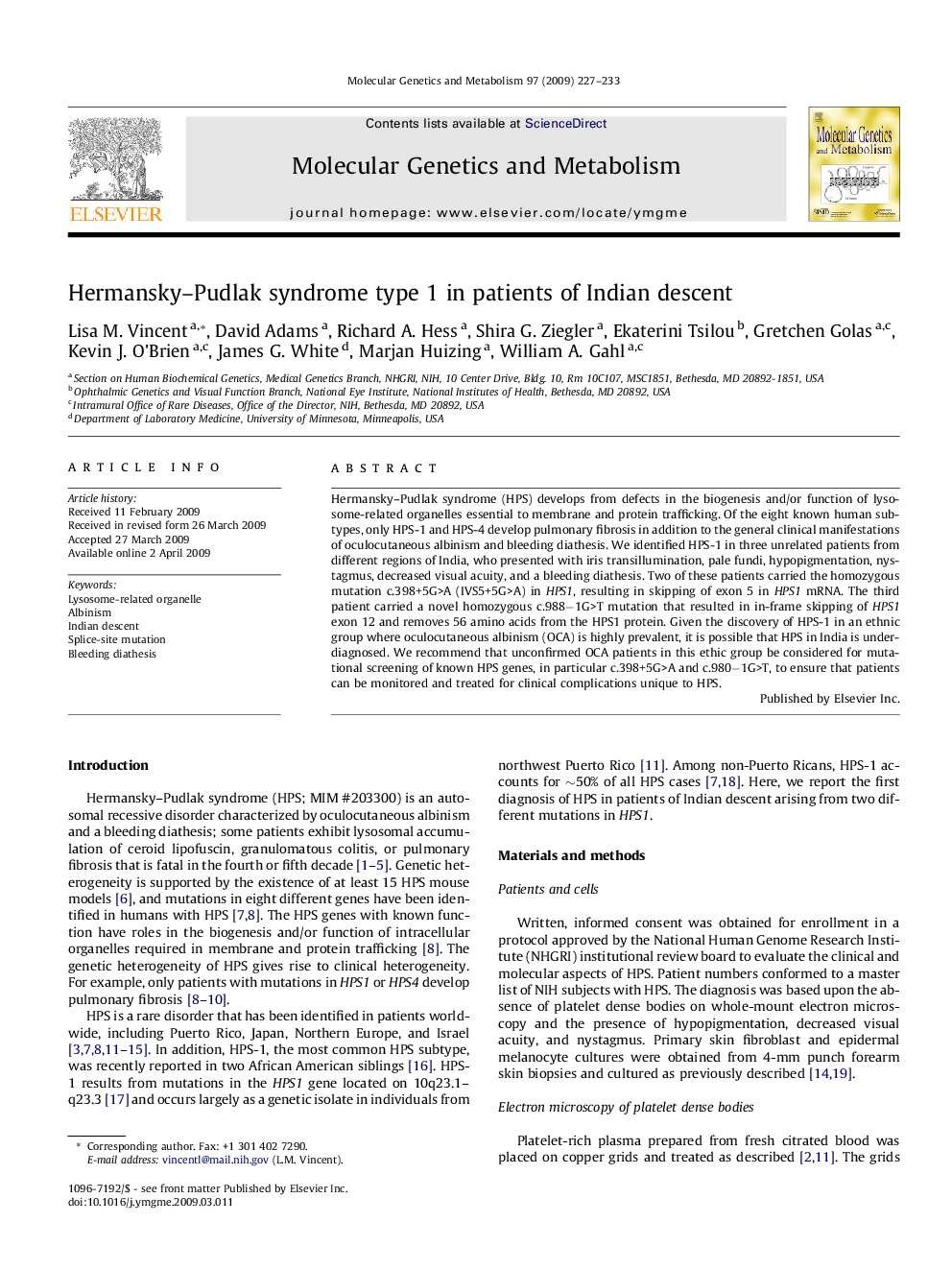| Article ID | Journal | Published Year | Pages | File Type |
|---|---|---|---|---|
| 1998988 | Molecular Genetics and Metabolism | 2009 | 7 Pages |
Hermansky–Pudlak syndrome (HPS) develops from defects in the biogenesis and/or function of lysosome-related organelles essential to membrane and protein trafficking. Of the eight known human subtypes, only HPS-1 and HPS-4 develop pulmonary fibrosis in addition to the general clinical manifestations of oculocutaneous albinism and bleeding diathesis. We identified HPS-1 in three unrelated patients from different regions of India, who presented with iris transillumination, pale fundi, hypopigmentation, nystagmus, decreased visual acuity, and a bleeding diathesis. Two of these patients carried the homozygous mutation c.398+5G>A (IVS5+5G>A) in HPS1, resulting in skipping of exon 5 in HPS1 mRNA. The third patient carried a novel homozygous c.988−1G>T mutation that resulted in in-frame skipping of HPS1 exon 12 and removes 56 amino acids from the HPS1 protein. Given the discovery of HPS-1 in an ethnic group where oculocutaneous albinism (OCA) is highly prevalent, it is possible that HPS in India is under-diagnosed. We recommend that unconfirmed OCA patients in this ethic group be considered for mutational screening of known HPS genes, in particular c.398+5G>A and c.980−1G>T, to ensure that patients can be monitored and treated for clinical complications unique to HPS.
